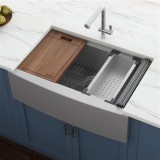Essential Aspects of Farmhouse Table Plans Diy
Building a farmhouse table is a rewarding DIY project that can add a touch of rustic charm to your home. However, it's important to approach the task with careful planning and attention to detail. Here are some essential aspects to consider when embarking on a farmhouse table build:
1. Choose the Right Wood
The type of wood you select will significantly impact the durability and aesthetic of your table. Popular choices for farmhouse tables include pine, oak, and reclaimed wood. Pine is a softwood that is relatively easy to work with, making it a good option for beginners. Oak is a more durable hardwood that will provide a more substantial feel to your table. Reclaimed wood adds a unique character and a touch of history to your project.
2. Determine the Size and Shape
The size and shape of your table should be determined by the available space in your dining area. Measure the space carefully and consider the number of people you typically seat at the table. Common farmhouse table shapes include rectangular, square, and oval. Rectangular tables are the most versatile, while square tables are ideal for smaller spaces. Oval tables provide a more formal and elegant look.
3. Gather the Necessary Tools and Materials
Before you begin building, gather all the necessary tools and materials. This includes a saw, a drill, a sander, wood screws, wood glue, and clamps. You may also need additional materials such as table legs, aprons, and breadboards.
4. Prepare the Wood
Once you have gathered your materials, prepare the wood by cutting it to the desired size and shape. Use a saw to cut the legs, aprons, and table top. Sand the wood thoroughly to remove any splinters or rough edges.
5. Assemble the Table
Begin assembling the table by attaching the legs to the aprons using wood glue and screws. Next, attach the table top to the aprons. For added strength, you can use breadboards to reinforce the connection between the table top and the aprons. Finally, attach any additional elements such as drawer slides or decorative trim.
6. Finishing Touches
Once the table is assembled, apply a finish to protect the wood and enhance its appearance. You can choose from a variety of finishes, including stains, paints, and sealers. Allow the finish to dry completely before using the table.
Conclusion
Building a farmhouse table DIY can be a challenging but rewarding project. By carefully planning each step of the process, selecting the right materials, and following these essential aspects, you can create a beautiful and durable piece of furniture that will become a cherished part of your home.

Farmhouse Table Updated Pocket Hole Plans Ana White

Farmhouse Table Plans To Build How A Diy

Free Plans For A Diy Farmhouse Table Edhart Me

Diy Farmhouse Table Free Plans Rogue Engineer

Diy Farmhouse Table Love Grows Wild

Diy Farmhouse Table And Bench Honeybear Lane

Diy Farmhouse Kitchen Table Projects For Beginners

How To Build A Farmhouse Table

How To Build A Diy Farmhouse Dining Table Thediyplan

53 Free Diy Farmhouse Table Plans For A Rustic Dinning Room Wood Dining








